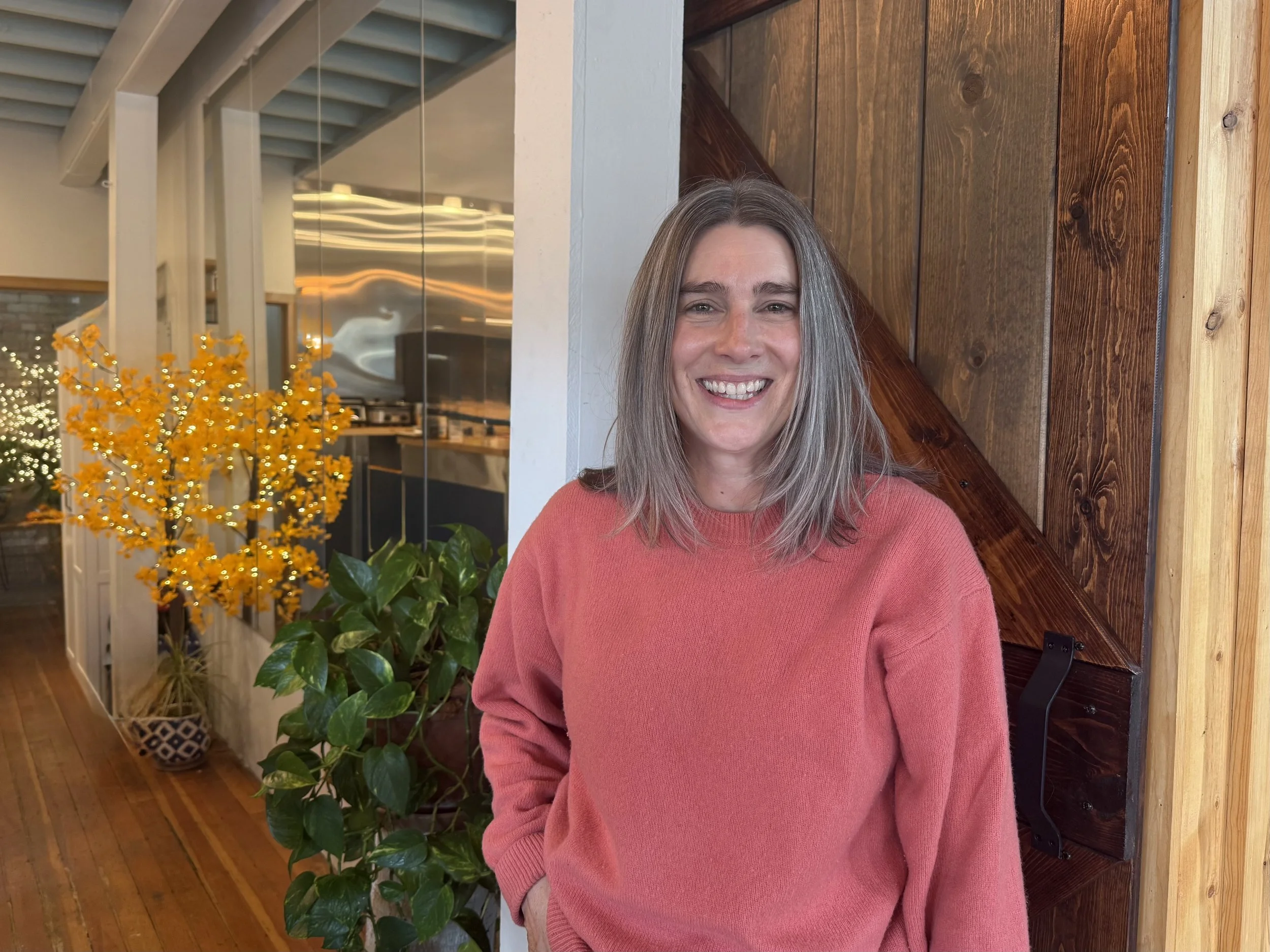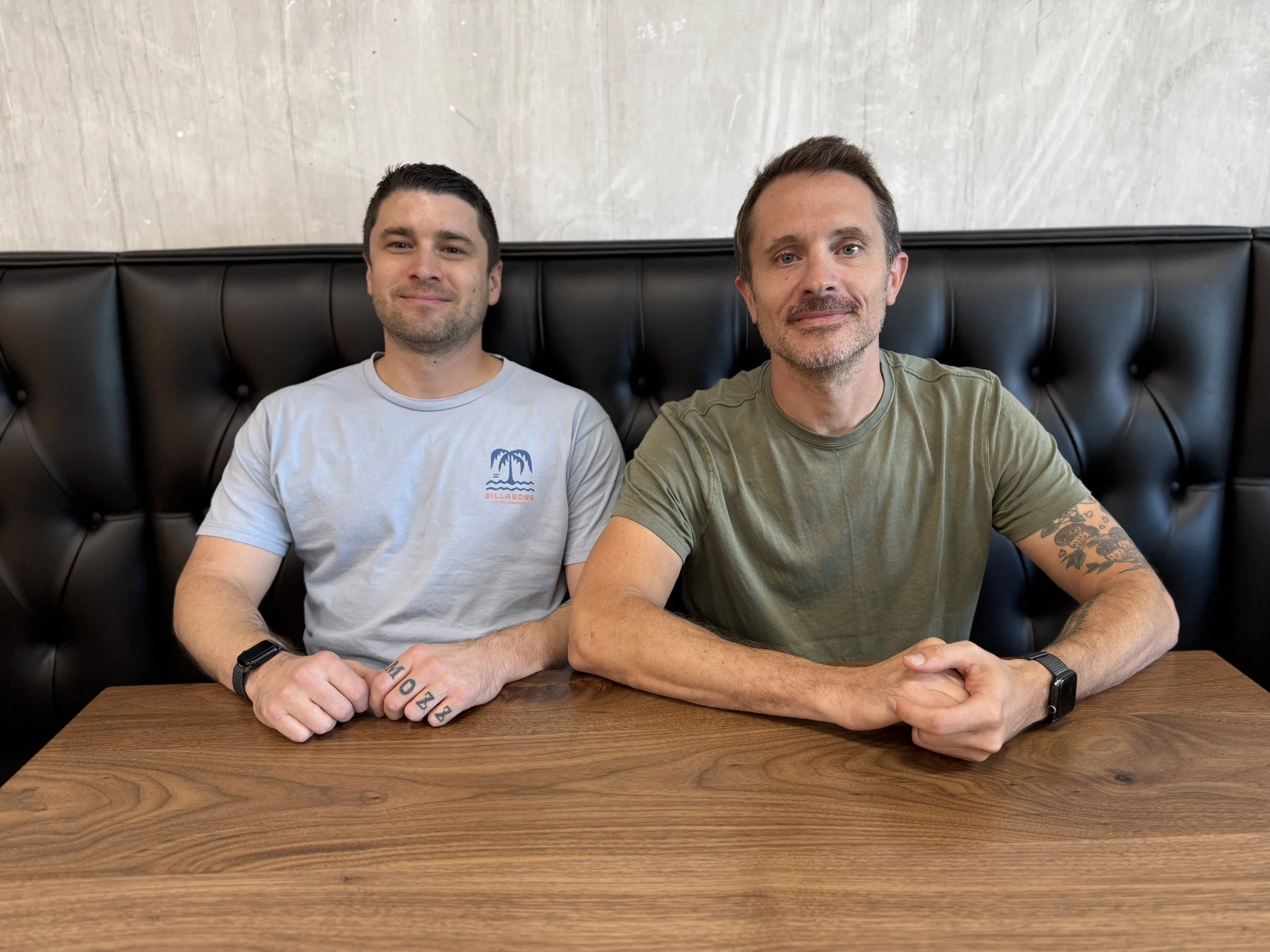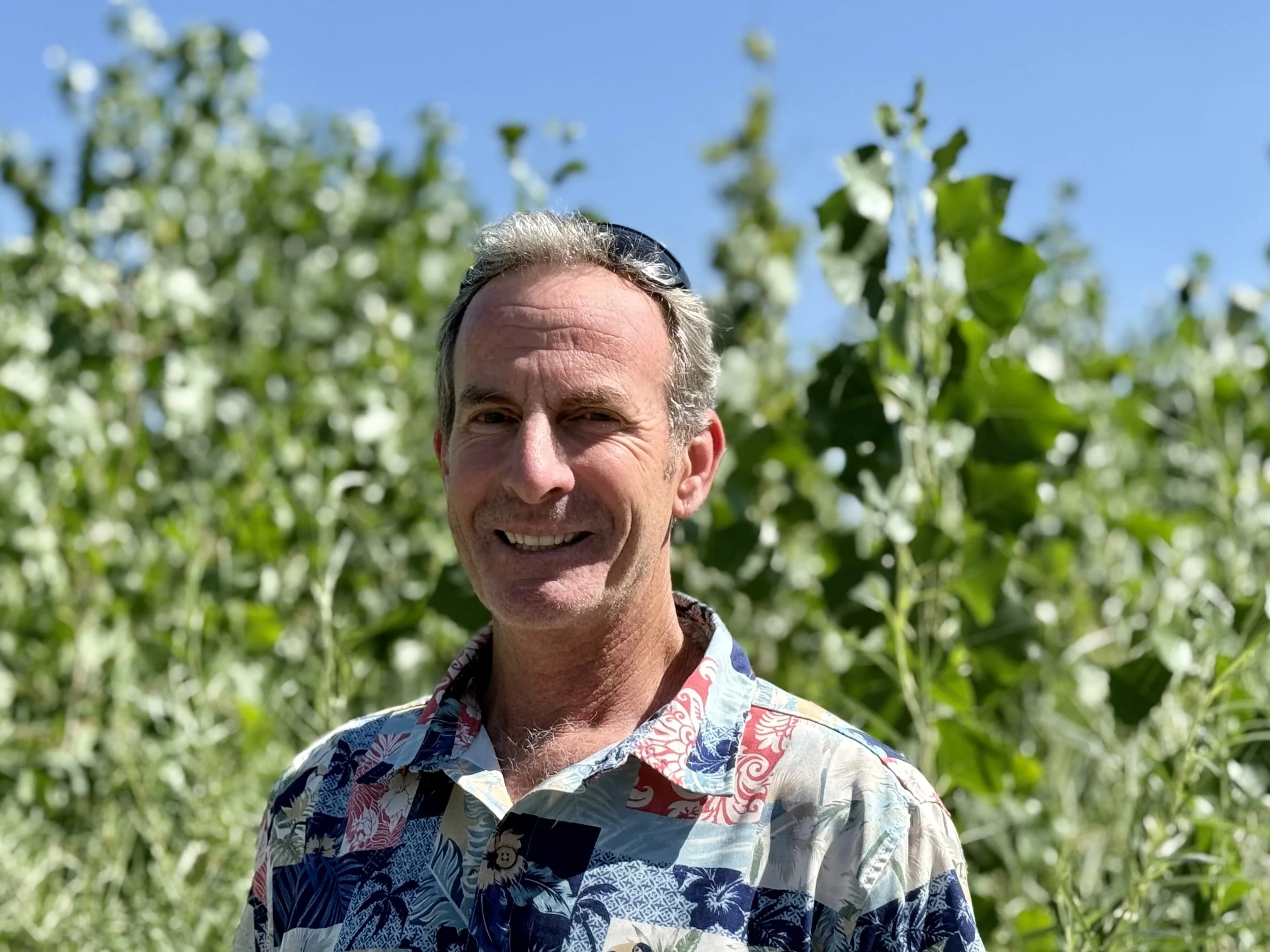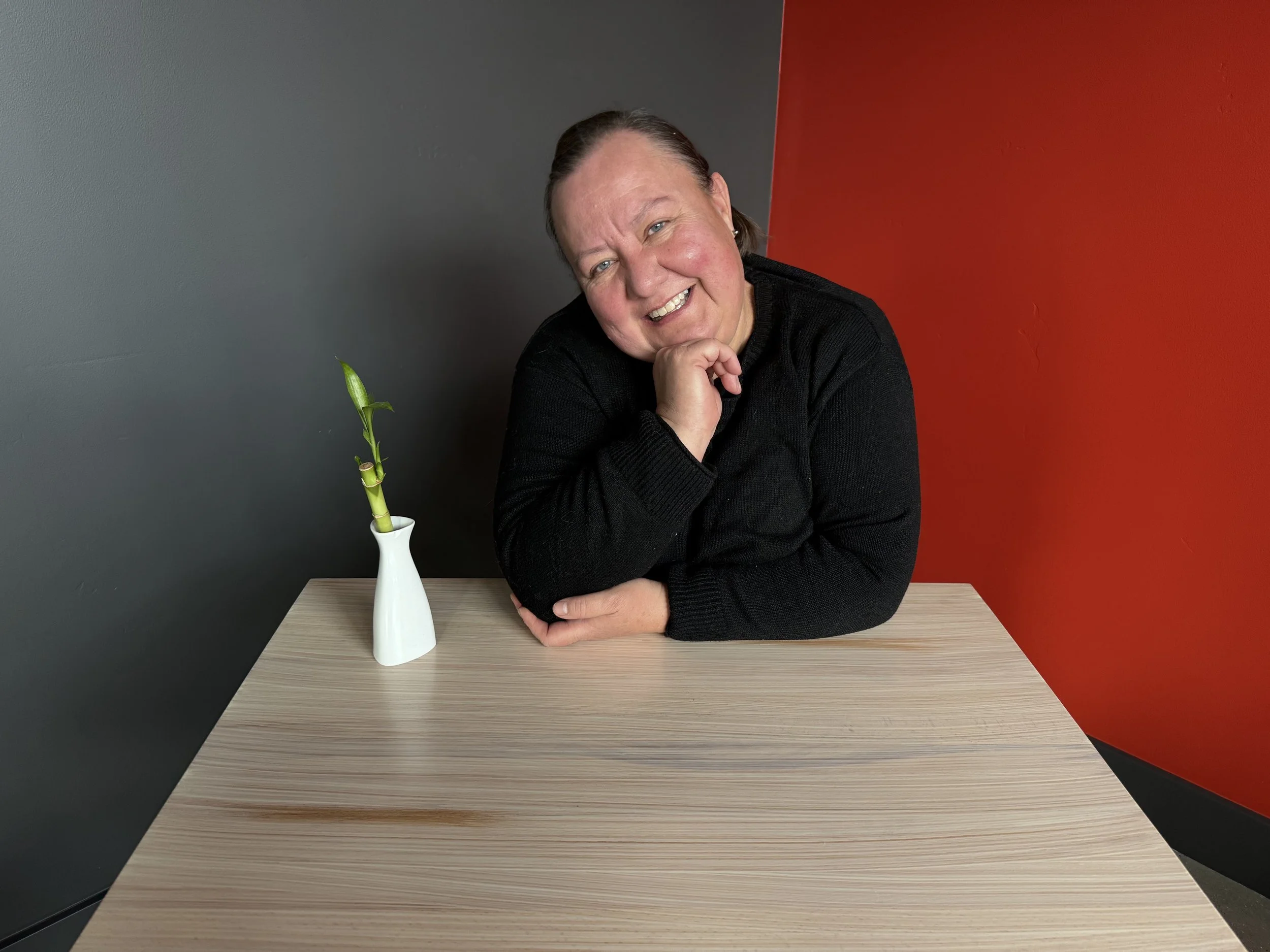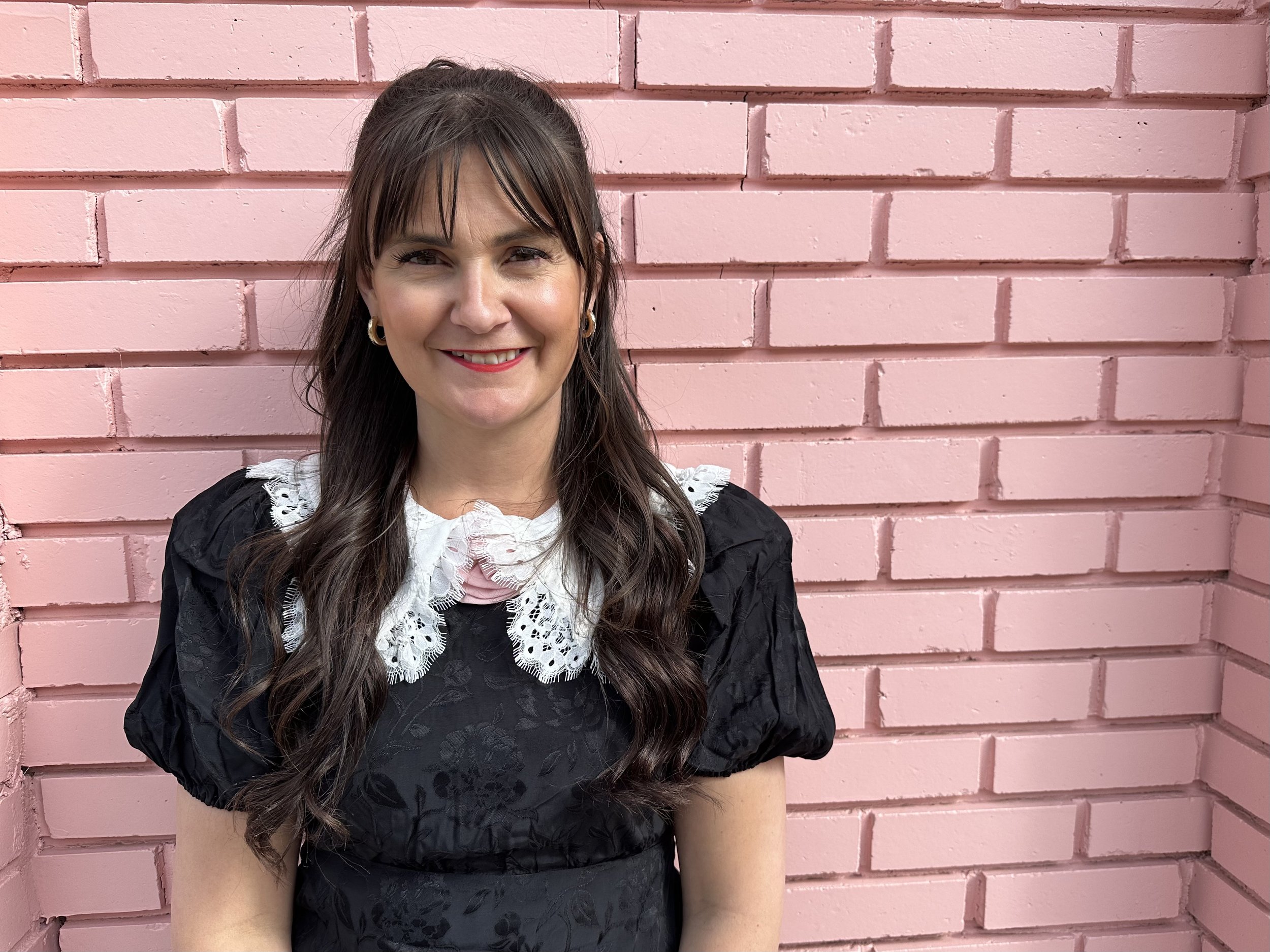Liberty Wells
“The thing that stands out when you say, ‘what do you want people to know about Liberty Wells?’ It is… that it exists. We have our own unique vibe and character that is different than other communities here in Salt Lake City.” For Margaret Coppin, that “unique vibe” is not an abstract idea. It is the sound of kids racing through the splash pad in Liberty Park, the sight of brick bungalows framed by mountain views, and the steady hum of small businesses along 900 South. As chair of the Liberty Wells Community Council, she spends much of her “free time” ensuring that this corner of Salt Lake remains a place where history, everyday life, and the future share the same streets.
Margaret grew up in Washington State. Despite her childhood in the Pacific Northwest, Margaret never felt like an outsider here. Her story has always circled back to Utah. Both of her parents are multigenerational Utahns; her father was born at Holy Cross Hospital, just up the road from where she lives today. “We come from Mormon pioneer heritage,” she said. When he retired, the family moved back because “he wanted to take care of his family.”
After graduating from high school in Utah, Margaret enrolled at Utah State University, majoring in political science. She finished college in 2001 and moved to Salt Lake, sharing an apartment with a friend in Marmalade.
A political science degree often leads to campaigns or public policy work, but Margaret took another path. “So, I majored in political science, and I’m now actually the chief quality officer at ARUP Laboratories,” she said with a small smile. She knew early on that she did not want to go into politics, yet she longed for a way to tap into the civic interests that had inspired her as a student.
That “something” turned out to be community. The skills Margaret uses in her professional life - facilitating meetings, staying organized, thinking in systems - now quietly shape her work at the Liberty Wells Community Council. "As far as the relation of what I do for the council and what I do for my job, very, very little overlaps. This is definitely my side gig.”
Salt Lake is also where she built her home life. Margaret met her husband “the old-fashioned way, at a bar.” They bought their first house in Liberty Wells in 2007, “right before the market collapsed,” married in 2010, and moved into a second Liberty Wells home in 2012. “No kids, two cats,” she said with a laugh. The two of them bike nearly everywhere - to the farmer’s market, up to Sugar House for dinner - simply because it is easy. “We love this neighborhood. We will always have a home in Liberty Wells. I can’t imagine moving away from here.”
Margaret’s path into community work began at her front doorstep. “I live kind of across the street, sort of diagonal to where a historic LDS church building used to be. It was called the Wells Ward, built in 1919.” Although she is not an active member of the LDS Church, she admired the building’s craftsmanship. In 2019, it underwent a meticulous restoration; months later, the earthquake of March 2020 damaged it severely.
“I started attending the community council meeting to try to understand the council’s role in advocating for these spaces.” Margaret said. She hoped the church might restore it or sell it to someone who would. “Unfortunately, that ended up being kind of a fool’s errand. They considered it unsafe. And it just was heartbreaking to see.” A devastating fire eventually sealed its fate.
But the loss drew Margaret into public life. Those early meetings as a concerned neighbor turned into her joining the board. By late 2025, she had served three years and now chairs the all-volunteer, nine-member council recognized by the city as the voice of Liberty Wells.
Liberty Wells is a neighborhood with a long, layered story. In pioneer days, this part of the valley was known as “the Big Yard” - farmland and orchards that supplied the growing city. Just up the street from Margaret’s home stands the Wilford Woodruff House and farm, once considered the edge of town. As the city expanded, Liberty Wells became what she calls “the first suburb of Salt Lake City.” They used to have a trolley system that ran through the city. The farthest point south it would go was in Liberty Wells. This was the connector for people living in the suburbs to the city. With the trolley came rows of modest brick bungalows built in the early 1900s. Margaret’s own house, built in 1914, resembles a mail-order kit home - typical floor plan, straightforward materials, and timeless charm.
Beneath the neighborhood runs water. “One of the reasons I think it’s called Liberty Wells is there are all sorts of wells underground." The artesian well at 800 South and 500 East sits just outside the council boundary, and a spring inside Liberty Park still serves as a favorite watering stop for runners and cyclists.
At the heart of the area sits Liberty Park, the oldest park in Utah. “It still looks very much like it did in the 1800s. They had the foresight to set all of this aside for public space, green space, open space.” As development presses in, Margaret and neighboring councils work tirelessly to preserve its openness, views, and historic feel. Everyone agrees that it is important to have vast expanses of grass and trees. “Again, we like being able to walk the park, seeing Lone Peak, Mount Olympus, and Grandeur Peak from Lake Liberty. And we don’t want to obstruct those views.”
This balance between growth and character also guides the council’s approach throughout Liberty Wells. Duplexes and triplexes have long been part of the neighborhood’s fabric, often blending so seamlessly that visitors hardly notice. “I think sometimes community councils can get a little bit of a bad rap. Many say we’re just against any type of progress or development. And that is truly not the case. We just want to honor the spirit of this community while balancing that development.”
One of the most visible examples is the parcel at 1300 South and State Street. For years, neighbors watched Coachman’s Café close, the surrounding strip mall come down, and the vintage Coachman sign remain standing - an icon waiting for its next chapter. Today, with new family members inheriting the property, Margaret remains hopeful the sign and perhaps the building will be preserved.
A different challenge came when out-of-state developers proposed a 300-unit apartment complex with major up-zoning. “The community really came out and voiced concerns.” Eventually, the developers withdrew. A new group proposed something far more compatible: roughly 150 townhomes, more green space, two-story height limits, and internal parking. “And that feels like a win.”
That win reflects a broader truth - the fabric of Liberty Wells is woven not only from historic homes and parks, but from its small, locally owned businesses. Margaret lights up when she talks about 900 South - its coffee shops, bakeries, restaurants, potters, nail salons, and vintage storefronts. “I think that’s another thing that’s so great about this area. These locally owned businesses.” Residents can stroll over for coffee, pick up a gift, or take a class. “People want destinations close to home. It’s wonderful to have more housing, but without nearby places that draw people in, you are not really fostering a walkable community.”
Margaret is especially proud of what is happening at the old Milk Block on 400 East; developer Kathia Dang has chosen adaptive reuse over demolition, restoring the warehouse and filling it with local businesses - including the long-awaited Wasatch Food Co-op. “Just not something you would hear from a developer normally,” Margaret said. “All of these are local businesses owned by local people.”
But Margaret is clear-eyed about the challenges. Even successful shops struggle with rising rents and national economic pressures. “I think some of it also is just being able to have policies on the city level that really support and foster these local business owners. I believe that small businesses are the spirit of the community. The fabric of the city, for sure.”
Another concern is homelessness in and around Liberty Park. Margaret speaks with realism and compassion. “I’m sympathetic that housing costs are forcing people into homelessness.” She does not believe in pushing unhoused people out of sight, yet she cannot ignore the public health issues that arise in parks and alleyways.
Her council hosts semiannual cleanups near the former Seven Canyons fountain. “In the last year or so, it’s sort of changed more from cleaning up the leaves to cleaning up trash debris including needles and bottles.” The council is now even considering requesting volunteers to sign waivers due to safety concerns. Clearing encampments simply shifts people elsewhere. She acknowledges that this is not a sustainable solution. Long-term housing, she believes, must be part of the answer.
When asked what she considers her greatest achievement as chair, Margaret does not point to a single project. She points to connection. “The biggest thing that we do as a council is really just connecting folks who care about their community with what’s going on in the community.” She values the moments when community feedback truly shapes development. But her deepest pride is reserved for Liberty Wells itself - for the neighbors who may not realize that they live in a place with its own name, identity, and story.
Margaret issues a quiet invitation to anyone who feels discouraged by the headlines. A small volunteer board may not wield much power, but it carries real influence when neighbors speak up together. Many people feel distressed about national or state politics; her advice is to redirect that energy toward what is right outside their door - the parks, the businesses, the streets, the people. “We may be small, but when we get involved in hyper-local city politics and city government, that’s where our voice can really be heard. This is where we can make a difference and protect what we all love about living here.”

